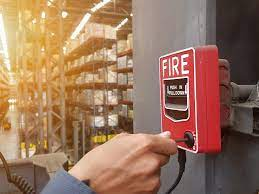A Fundamental Guide To Fire Alarm Systems
All fire alarm systems in Glendora and other parts of the world are a significant part of the fire and life safety of a building and its residents. A fire alarm system serves multiple operations that and it all could be a little intricate to someone new to fire alarms. That is the essence of this write-up, to frame a layman’s guide for fire alarm basics. The purpose of this article is to throw light on a few of the principal components and functions of a fire alarm system.
FACU – Fire Alarm Control Unit
Most of the experts consider the fire alarm control unit to be the brain of the fire alarm system. It is quite justified as it observes all the inputs and regulates all the outputs. A few hard-core may call this a fire alarm control panel or fire alarm panel. The diverse conditions that can be monitored at the fire alarm control unit are Supervisory, Alarm, and Trouble. These conditions may lead to a signal transmission to the supervising station as well.
Supervisory – A supervisory condition signifies that there is bound to be some problem with a process, system, or equipment that is surveilled by the fire alarm control unit. A perfect example of this would be a sprinkler system valve being shut, this would display as a supervisory signal on the control unit.
Alarm – An alarm condition implies that there is a sudden danger for any life, property, or mission. An ideal example of this has been observed while handling a fire alarm in Glendora, where a smoke detector transmits a signal to the fire alarm control unit that there is an existence of smoke, which would trigger notification to the inhabitants to vacate the premises.
Trouble – A trouble condition suggests that there is some issue or flaw with the fire alarm system. You may cite the example of a break in an initiating device circuit. This would display as a trouble alert on the control unit.
Initiation
The initiation of a fire alarm system comprises all the circuits and devices that transmit a signal to a fire alarm to notify regarding the condition of a secured space or the presence of some fire. Initiation devices are but are not restricted to smoke detectors, heat detectors, water manually actuated devices, flow switches, and pressure switches. Based on the system, the signal from an initiating device can lead to a condition of an alarm or a supervisory condition. Depending on the kind of detectors and fire alarm control unit, the signals can be transmitted over a signalling line circuit (SLC) for addressable systems, or an initiating device circuit (IDC) for traditional systems.
Supervision
It is feasible to make use of a fire alarm system for surveilling the condition of other processes, systems, or equipment that are associated with the fire and life safety of the building as well as important to the chore of the property. Supervision may comprise but is not restricted to valves on fire protection systems, sundry fire protection systems like valve room or storage tank temperatures, kitchen hood suppression systems, and issues concerned with the status of the fire pump with these systems would communicate a signal to the fire alarm control unit through an initiating device circuit (IDC) for traditional systems, or a signalling line circuit (SLC) for addressable systems and would establish a supervisory condition at the fire alarm control unit.
Power
A fire alarm system must be provided with dependable power so that it can operate if there is an emergency.
Primary Power
Primary power to the fire alarm system can be bestowed upon by the electric utility, an engine-driven generator and Energy Storage System, or a cogeneration system.
Secondary Power
Secondary power to the fire alarm system can be offered through accurately sized batteries, batteries and a reserve generator, or an Energy Storage System.
Notification
A fire alarm system can notify to caution the inhabitants of the property and in certain instances on-site emergency forces. Notification is communicated through visible and audible notification appliances. The visible notification is usually offered through strobes, and audible notification is delivered by either speaker, which may offer various tones and voice signals, or horns, which can just provide a single tone. Most importantly, it has been observed that a fire alarm control unit will transmit the signal to the notification appliances through a notification appliance circuit
Emergency Control Functions
The fire alarm control unit can be applied to regulate the function of other systems like door closers, elevator recall, smoke control systems, and others. The commonest method that the fire alarm can do this is through the utilization of a control circuit and a relay.
Communication to Supervising Station
Supervising stations observe the premises and comprise Proprietary Supervising Stations, Central Station Service, and Remote Supervising Stations. Depending on the categories of signals obtained from the fire alarm control unit and the kind of supervision station, the supervising station may notify the emergency forces or dispatch a runner service to solve trouble to supervisory conditions.
Inference
Hopefully, you found this above-mentioned guide regarding fire alarm basics to be explanatory enough. If you zero in on the best fire alarm service In Glendora, then you need not have to worry about staying protected.




Comments
Post a Comment